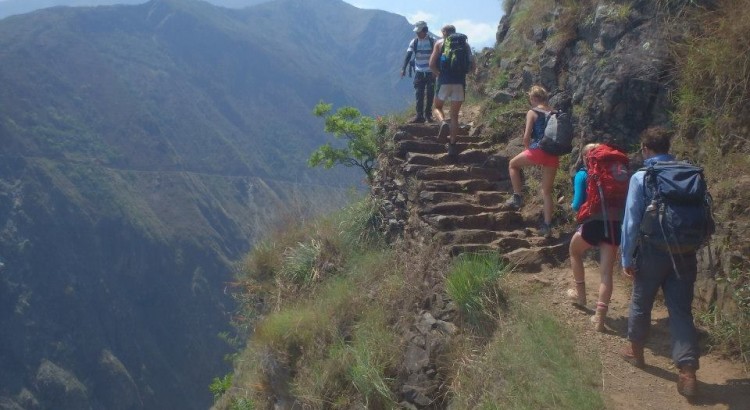This might seem like a weird title for a blog post, as you cannot always avoid altitude sickness. But we’ve put together our top tips on how to increase your chances of preventing it.
Traveling through South America involves being at high altitude a lot of the time, with constant changes in altitude as your cross different mountain ranges. This can put a lot of strain on the body.
Even if you are in excellent physical condition, this really has no bearing on how you will acclimatise to high altitude, so everyone needs to take precautions.
Making sure you follow the tips below will reduce your chances of getting sick and having to miss parts of your trip, as if you get sick, the only way to get better is to move to lower ground, therefore forefitting part of your itinerary. So here goes:
1. Stay Hydrated:
I cannot emphasise this point enough…water, water, water. It sounds so simple, but you would be suprised at the amount of people we see on high altitude trips without any. On our 3 day Salt Flats trip in Bolivia we took 12 litres of water with us. Yes we were constantly asking where the next baño was, but it is fundamental to your body coping with the altitude.
I later found out it wasn’t just the water making me want to go though: at altitude your kidneys start dumping water to increase the amount of oxygen in your blood! What a clever little thing the human body is.
2. Drink Coca Tea:
Now I know what you may be thinking, yes, these are illegal in several countries, but they have been used by indigeous Andean communities in Latin America for as long as anyone can remember. We personally didn’ t like to chew them. Tastes like you are trying to eat a tea bag. But we had them a couple of times a day in a tea (more water ![]() ).
).
We aren’ t actually sure whether they did anything or not but so many people swear by them, so maybe give it a go. Just make sure you are not crossing any borders or going through airport security with them!
3. Walk Slowly, Take it Easy:
You will notice that even simple tasks like putting your boots on become more difficult at altitude. Now imagine how different your body is going to feel when hiking or doing any activity that will involve a shortness of breath. You need to take it easy and stop when you need to. It’ s not a race!
4. No Alcohol and No Red Meat:
Alcohol reduces the oxygen in your blood so it is not recommended for the night before you are heading to a higher altitude area or whilst you are there. Similarly, avoid hard to digest foods such as red meat. One great tip I was told to follow though…eat loads of carbs. YES. No need to tell me twice…
5. Try to Acclimatise Before Moving Higher:
We are pretty quick backpackers. Most people are shocked when we tell them how far we have traveled in the past month, but when at altitude you really need to be careful of moving too quickly before you have adjusted. Spend a few days at a new/high altitude before you take on a big hike. For example; if you have just got to Cusco, spend a few days there before hiking the Inca Trail. The last thing you will want is to get sick on the hike and not complete that amazing journey.
6. If You Are Flying Into High Altitude BE MORE CAREFUL:
We didn’ t have first hand experience of flying to a high altitude zone but it is a lot more likely that you will get sick as the process is not gradual. Most people around us who were getting sick were those who flew in.
I will give you an example…A guy on our Salt Flats trip had FLOWN in from AUSTRALIA the DAY BEFORE our trip started. Now…did that give him any time to adjust to being at 4,500 meters above sea level…no, he felt rough the entire time. It is worth spending a couple of days adjusting so you actually enjoy your experiences!
How do you know you have altitude sickness?
Please watch out for the symptoms below and keep a closer eye on your fellow travelers to make sure they are doing OK too.
- Loss of appetite
- Nausea or vomiting
- Fatigue or weakness
- Dizziness or light-headedness
- Insomnia
- Pins and needles
- Shortness of breath upon exertion
- Persistent rapid pulse
- Drowsiness
- Peripheral edema (swelling of hands, feet, and face).
Once again, the only way to recover from altitude sickness is to move to lower land so I really can’t express how important it is to plan ahead and be sensible.
Good luck!!


It’s really too interesting and obviously informative for beginner campers. the best part is in the last one (about altitude sickness)